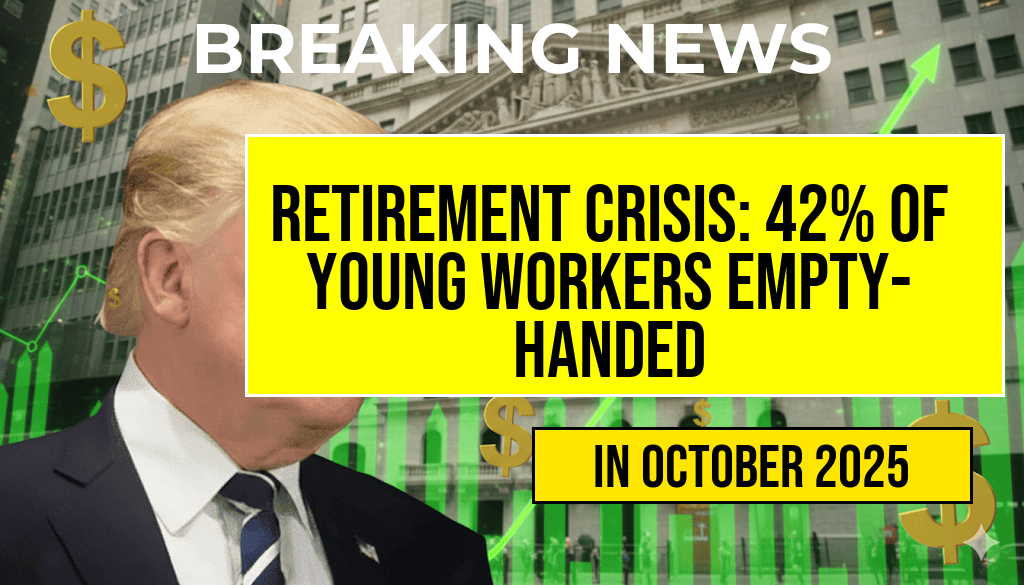Recent surveys reveal a startling shift in American attitudes toward retirement security: approximately two-thirds of U.S. adults express greater concern about outliving their retirement savings than facing death itself. This growing anxiety underscores the financial vulnerability many Americans feel as they approach retirement age, fueled by concerns over insufficient savings, fluctuating markets, and uncertain social safety nets. Despite decades of increased focus on planning and saving, a significant portion of the population remains unprepared for the financial realities of aging, prompting policymakers and financial experts to reevaluate current strategies for ensuring long-term economic stability for retirees.
The Rising Fears of Retirement Insecurity
Survey Highlights and Demographic Insights
- According to a recent poll conducted by the Pew Research Center, 67% of Americans worry more about outliving their savings than about death.
- Among these, younger seniors (ages 55-64) exhibit the highest levels of concern, with approximately 75% expressing anxiety about financial depletion in later years.
- By contrast, those in their early 30s and 40s show a growing awareness of their future financial vulnerability, often citing stagnant wages and rising healthcare costs as primary stressors.
Factors Contributing to the Anxiety
Several interconnected factors contribute to this widespread apprehension. The decline of traditional pension plans has shifted financial responsibility onto individuals, making personal savings and 401(k) accounts critical yet often inadequate components of retirement planning. Additionally, the volatility of stock markets and economic disruptions—such as the COVID-19 pandemic—have undermined confidence in long-term investments. Experts also cite the increasing cost of healthcare and long-term care as significant hurdles, further compounding fears of outliving savings.
Financial Preparedness and Challenges
Retirement Savings Shortfalls
| Age Group | Average Savings | Median Savings |
|---|---|---|
| 35-44 | $35,000 | $13,000 |
| 45-54 | $65,000 | $26,000 |
| 55-64 | $117,000 | $53,000 |
| 65-74 | $144,000 | $43,000 |
The data illustrates that many Americans are still falling short of the savings needed for a comfortable retirement. The Federal Reserve estimates suggest that nearly 40% of adults have less than $10,000 saved for retirement, emphasizing the persistent gaps in planning.
Impact of Economic Trends
Growing inflation rates and rising healthcare costs have further eroded purchasing power, making it more challenging to accumulate sufficient resources. Experts warn that without strategic adjustments, many will face the dilemma of choosing between essential healthcare and basic living expenses in retirement.
Policy Implications and Future Outlook
Government and Employer Initiatives
In response to mounting concerns, policymakers are exploring measures to bolster retirement security. These include expanding access to employer-sponsored retirement plans, incentivizing savings, and proposing adjustments to Social Security to address funding shortfalls. However, critics argue that current proposals may not go far enough to address the scale of the problem.
Financial Planning and Personal Responsibility
Financial advisors emphasize the importance of early and consistent saving, diversified investment strategies, and realistic retirement goals. Resources such as retirement planning tools and government-sponsored educational programs aim to empower individuals, but awareness and proactive behavior remain uneven.
Public Sentiment and Cultural Shifts
Changing Perspectives on Aging and Retirement
The prevalent fear of outliving savings has contributed to shifting attitudes toward retirement. Some Americans now view retirement not as a fixed milestone but as an ongoing process, with many working beyond traditional retirement age or engaging in phased retirement. Younger generations are increasingly prioritizing financial stability over traditional notions of early leisure, reflecting a pragmatic approach to aging in uncertain economic environments.
Long-Term Outlook
While economic conditions remain volatile, the consensus among experts suggests that enhancing financial literacy, expanding access to retirement savings tools, and fostering a culture of saving can help mitigate fears. However, the underlying structural issues—such as wage stagnation and healthcare inflation—require sustained policy attention to ensure that a majority of Americans can face old age with financial confidence rather than fear.
Frequently Asked Questions
What is the main concern of Americans regarding retirement savings?
Most Americans are primarily worried about outliving their retirement savings rather than facing death, with two-thirds expressing this fear as their top concern.
Why do Americans fear outliving their retirement savings?
Many Americans fear insufficient retirement funds due to increasing life expectancy, rising healthcare costs, and uncertainty about future financial stability.
What percentage of Americans are worried about outliving their retirement savings?
Approximately two-thirds of Americans are concerned about outliving their retirement savings, highlighting a widespread anxiety about financial security in old age.
How does this fear compare to concerns about death among Americans?
Compared to fears of death, Americans are more worried about the financial implications of living too long without enough savings, making this the predominant concern.
What can Americans do to address their fears about retirement savings?
To mitigate these fears, Americans can consider early retirement planning, increasing savings, exploring investment options, and consulting with financial advisors to ensure a secure financial future.





